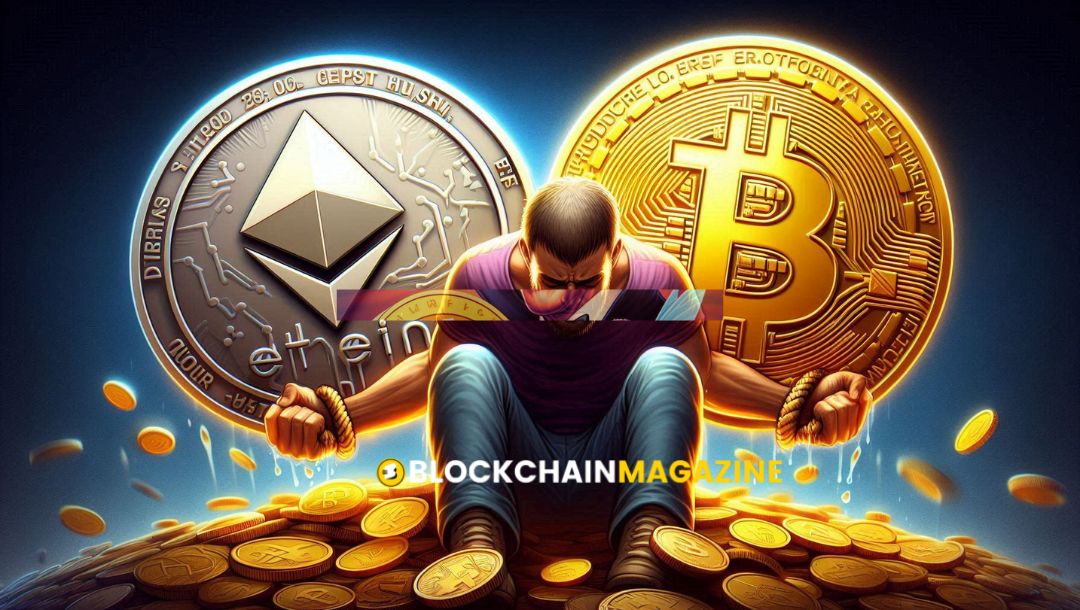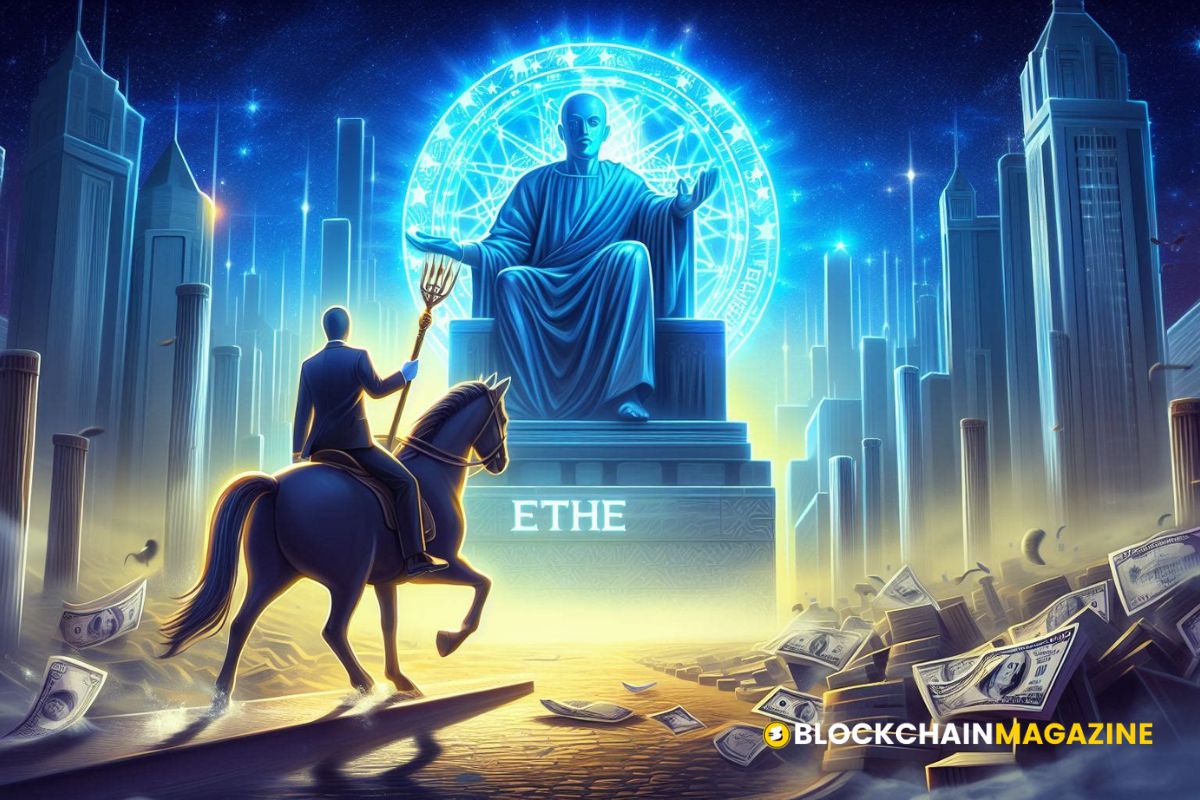The cryptocurrency landscape is experiencing a phase of consolidation following a significant rally from October to March, primarily benefiting investors in the two leading digital assets. However, those holding smaller cryptocurrencies face a harsh correction, with sentiment in crypto social media echoing bear market despondency.
While Bitcoin (BTC) and Ethereum’s Ether (ETH) are merely 15% below their annual peaks, several prominent altcoins such as Solana (SOL) and Avalanche (AVAX) have plummeted 40% to 50% from their March highs. Meanwhile, layer-1 contenders like Sui (SUI) and Aptos (APT) have nosedived 60% to 70%.
The Burden of Token Unlocks and Market Trends
The downward pressure on altcoins stems from several factors, including venture fund selling, increasing token unlocks, a dearth of new capital inflows, and seasonal trends. Altcoins, unlike their more established counterparts, often face continual dilution due to token unlocks and distributions set years in advance. This dilution is exacerbated by the fact that most tokens are locked up, either acquired by early investors or reserved for ecosystem development and grants.
For instance, the Ethereum layer-2 network Arbitrum’s token (ARB) is nearing its historic low from last September, despite its market capitalization swelling to $2.5 billion from $1 billion due to a significant increase in token supply. Similarly, Solana’s supply inflates by 75,000 tokens daily, translating to approximately $10 million at current prices.
“Unlike equities that benefit from a steady passive bid from ETF inflows and bond buybacks, crypto—especially altcoins—endures relentless sell pressure,” noted Quinn Thomson, founder of the crypto hedge fund Lekker Capital, in a post on X.
A considerable portion of this sell pressure originates from venture capital funds cashing out on their early investments in projects launched in previous years. Markus Thielen, founder of 10x Research, highlighted in a recent report that venture capital funds invested $13 billion in Q1 2022, right before the market plunged into a steep bear market. These funds are now under pressure from their investors to return capital, as the spotlight shifts to the burgeoning artificial intelligence sector.
The Impact of Market Liquidity and Seasonal Trends
The appetite for smaller, speculative crypto assets has waned, and trading volumes have diminished, leading to insufficient demand to absorb the supply influx. Liquidity inflows to the crypto markets have also stagnated or reversed recently, as evidenced by the market value of stablecoins, which are predominantly used as intermediaries for crypto trading.
The combined market capitalization of the four largest stablecoins—Tether’s USDT, Circle’s USDC, First Digital’s FDUSD, and Maker’s DAI—has remained stagnant since April, following a $30 billion expansion earlier this year. Moreover, stablecoin balances on exchanges have decreased by $4 billion, reaching the lowest level since February, according to David Shuttleworth, partner at Anagram, in a post on X citing Nansen data.
“This trend bodes ill for tokens with large upcoming unlocks as well as new tokens and airdrop programs,” Shuttleworth remarked.
Newly launched tokens such as those of blockchain bridge Wormhole (W), yield-bearing synthetic dollar protocol Ethena (ENA), and layer-2 network Starknet (STRK) have all suffered price drops of approximately 60% to 70% from their respective highs, facing billions of dollars worth of token distributions in the coming years.
Seasonal trends have also been unfavorable for smaller tokens, with June traditionally being a bearish month for altcoins. TradingView data indicates that the aggregated market cap for crypto assets excluding BTC and ETH, captured by the TOTAL.3 metric, has declined every June for the past six years. This month appears to be following the same pattern, with TOTAL.3 down 11% to date.
In conclusion, while Bitcoin and Ether demonstrate resilience near their yearly highs, the broader altcoin market grapples with significant challenges, from token dilution to liquidity constraints, exacerbated by adverse seasonal trends. As the cryptocurrency ecosystem evolves, navigating these complexities will be crucial for investors seeking to capitalize on digital asset opportunities.

 Bitcoin
Bitcoin  Ethereum
Ethereum  Tether
Tether  XRP
XRP  Solana
Solana  Dogecoin
Dogecoin  USDC
USDC  Lido Staked Ether
Lido Staked Ether  Cardano
Cardano  TRON
TRON  Avalanche
Avalanche  Toncoin
Toncoin  Wrapped stETH
Wrapped stETH  Chainlink
Chainlink  Shiba Inu
Shiba Inu  Wrapped Bitcoin
Wrapped Bitcoin  Sui
Sui  Hedera
Hedera  Polkadot
Polkadot  Stellar
Stellar  WETH
WETH  Hyperliquid
Hyperliquid  Bitcoin Cash
Bitcoin Cash  LEO Token
LEO Token  Uniswap
Uniswap  Pepe
Pepe  Litecoin
Litecoin  Wrapped eETH
Wrapped eETH  NEAR Protocol
NEAR Protocol  Ethena USDe
Ethena USDe  USDS
USDS  Aave
Aave  Aptos
Aptos  Internet Computer
Internet Computer  Mantle
Mantle  POL (ex-MATIC)
POL (ex-MATIC)  Cronos
Cronos  Ethereum Classic
Ethereum Classic  Render
Render  Monero
Monero  WhiteBIT Coin
WhiteBIT Coin  Artificial Superintelligence Alliance
Artificial Superintelligence Alliance  MANTRA
MANTRA  Bittensor
Bittensor  Dai
Dai  OKB
OKB  Virtuals Protocol
Virtuals Protocol 



